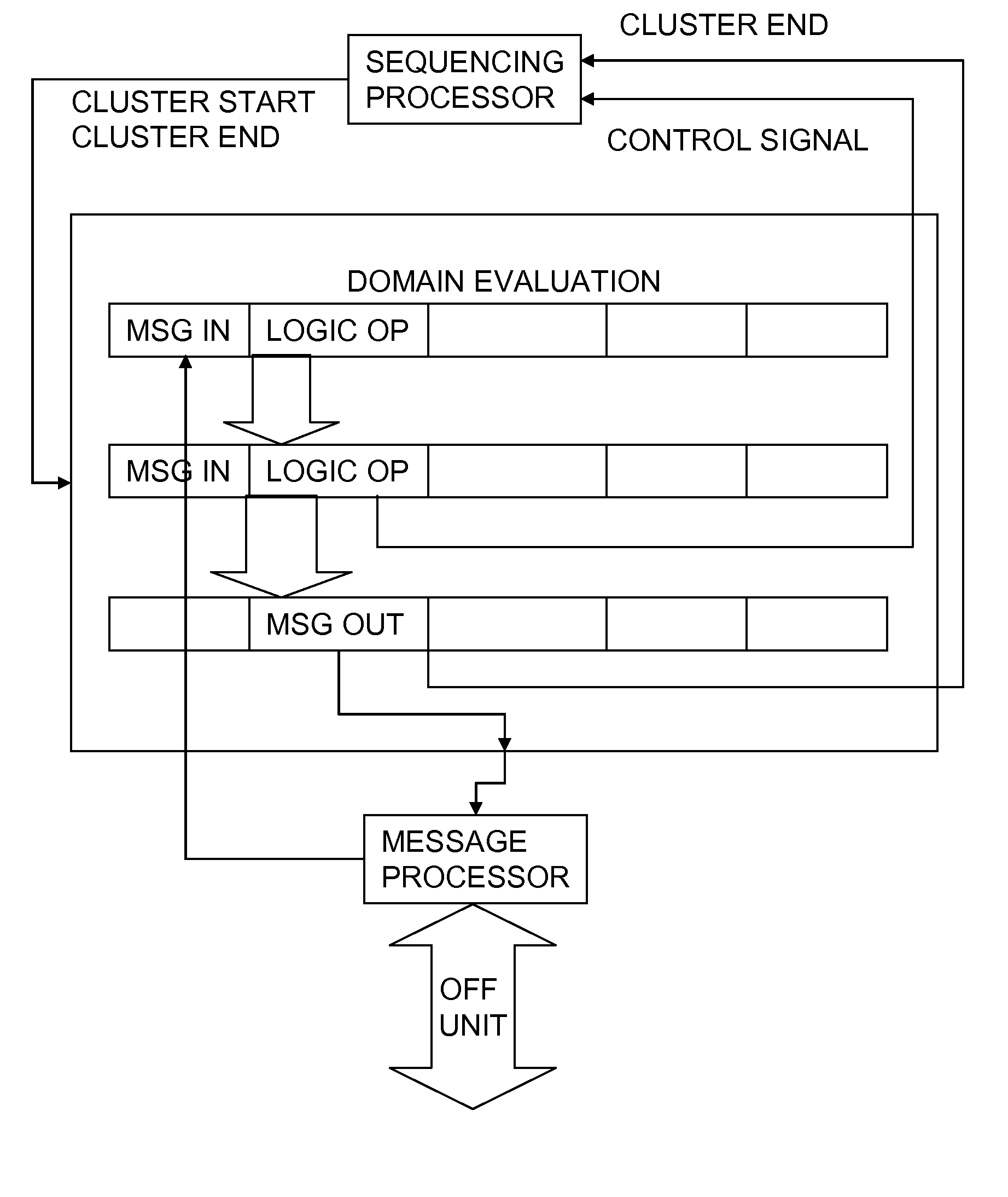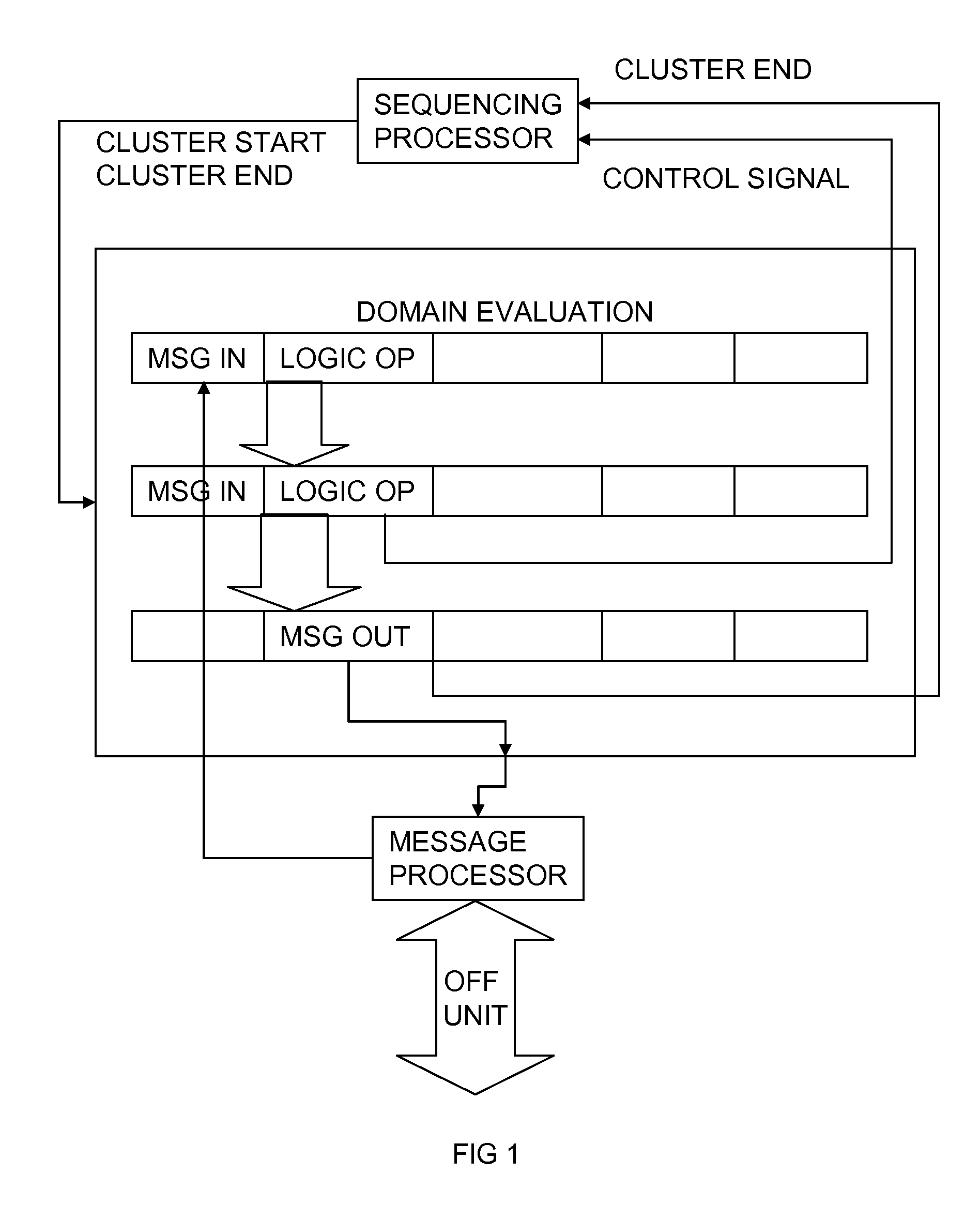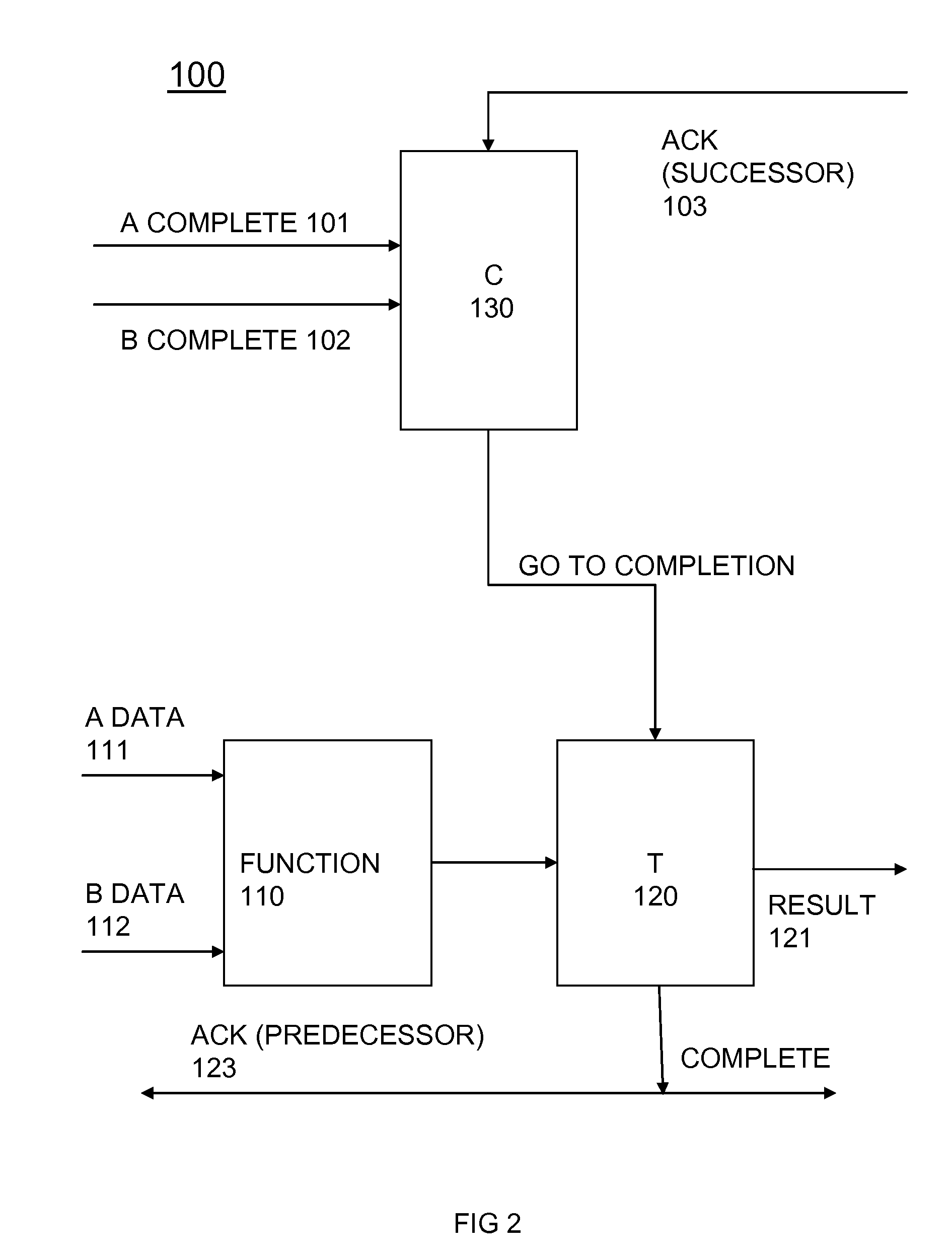Method for delay immune and accelerated evaluation of digital circuits by compiling asynchronous completion handshaking means
a digital circuit and asynchronous completion technology, applied in data switching networks, instruments, analogue processes for specific applications, etc., can solve problems such as failures in actual design, failures in delay faults, and all the complexity of designing and fabricating a supercomputer, so as to eliminate vulnerabilities of delay faults and increase performance. , the effect of scalable capacity
- Summary
- Abstract
- Description
- Claims
- Application Information
AI Technical Summary
Benefits of technology
Problems solved by technology
Method used
Image
Examples
an embodiment
[0041] The Levelized Asynchronous Domain Evaluation (LADE) processor is an embodiment of the CLOE / Octal evaluation processor. FIG. 1 presents the System View of this implementation approach, and provide details on a method of building the Levelized Asynchronous Domain Evaluation processor. The Sequencing Processor generates Cluster Start / End enables to execute a Domain. Domain execution is controlled by a control sequence program that uses control signal values generated by the user design and external events (in case of cosimulation) to determine the domain to be executed.
[0042] The Message Processor sends messages generated by Domain Evaluation to other Units. Messages sent by other Units are turned into message ready signals and message data for Domain Evaluation.
[0043] The Domain Evaluation is done by the LADE processor; this processor has levels of instructions to execute. A sequence of levels of instruction is called a Domain. Each level of instruction consists of many sub-i...
PUM
 Login to View More
Login to View More Abstract
Description
Claims
Application Information
 Login to View More
Login to View More - R&D
- Intellectual Property
- Life Sciences
- Materials
- Tech Scout
- Unparalleled Data Quality
- Higher Quality Content
- 60% Fewer Hallucinations
Browse by: Latest US Patents, China's latest patents, Technical Efficacy Thesaurus, Application Domain, Technology Topic, Popular Technical Reports.
© 2025 PatSnap. All rights reserved.Legal|Privacy policy|Modern Slavery Act Transparency Statement|Sitemap|About US| Contact US: help@patsnap.com



